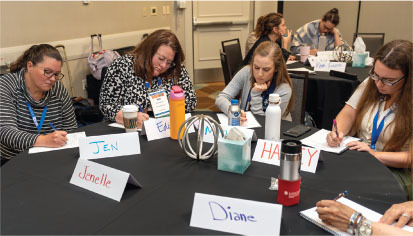May/June 2018
Leading Insight
Want to Engage Your Next Gen Leaders? Make Mentoring a Higher Priority
 In AEC firms throughout the nation, young professionals are clamoring for experiences and the guidance necessary to help them advance. A recent Conference Board leadership report shows that formal mentoring programs are essential to retaining talented employees and growing a firm’s leadership base. Yet, too many firms aren’t making mentoring a top priority.
In AEC firms throughout the nation, young professionals are clamoring for experiences and the guidance necessary to help them advance. A recent Conference Board leadership report shows that formal mentoring programs are essential to retaining talented employees and growing a firm’s leadership base. Yet, too many firms aren’t making mentoring a top priority.
Sixty percent of leaders surveyed stated that they didn’t have a formal mentor in the earliest phase of their leadership journeys despite the positive benefits of having a mentor. Although 47% of senior leaders have experienced some form of mentoring, too many of them aren’t returning the favor by sharing their knowledge and experiences with less senior professionals. This may be a big mistake for both employee engagement and retention and the firm’s financial health. The report finds that there’s likely a mentoring connection, as 54% of companies in the top third for financial performance have formal mentoring programs and strategies. Firms with a “mentoring culture” also benefit from having higher leader quality, lower turnover, and greater capability of capturing organizational knowledge before it’s lost.
Firm leaders should consider doing the following to improve mentoring and engagement:
Encourage formal and informal mentoring. Formal mentoring programs should foster guided connections and interactions between junior and senior leaders, but it’s also valuable to encourage informal mentorships as well. Senior leaders should be comfortable engaging with their junior colleagues to gain new perspectives.
Develop mentoring contracts. Mentoring is a valuable investment of a leader’s time to share knowledge and experience. Provide mentors and their charges with examples of how to clearly communicate expectations for the mentoring relationship, and also set guidelines in advance for the mentorship.
Build mentoring networks. Organizations can go only so far in connecting and establishing mentorships. Foster peer learning by establishing mentoring networks, so that when there isn’t formal guidance on a specific question or need, leaders can seek the help and support of others throughout the organization.
Make mentoring a retention strategy. Leverage mentoring connections to foster retention. Be purposeful about matching mentors to junior leaders who are at greater risk of turnover.


 Volunteering at NSPE is a great opportunity to grow your professional network and connect with other leaders in the field.
Volunteering at NSPE is a great opportunity to grow your professional network and connect with other leaders in the field. The National Society of Professional Engineers (NSPE) encourages you to explore the resources to cast your vote on election day:
The National Society of Professional Engineers (NSPE) encourages you to explore the resources to cast your vote on election day:




